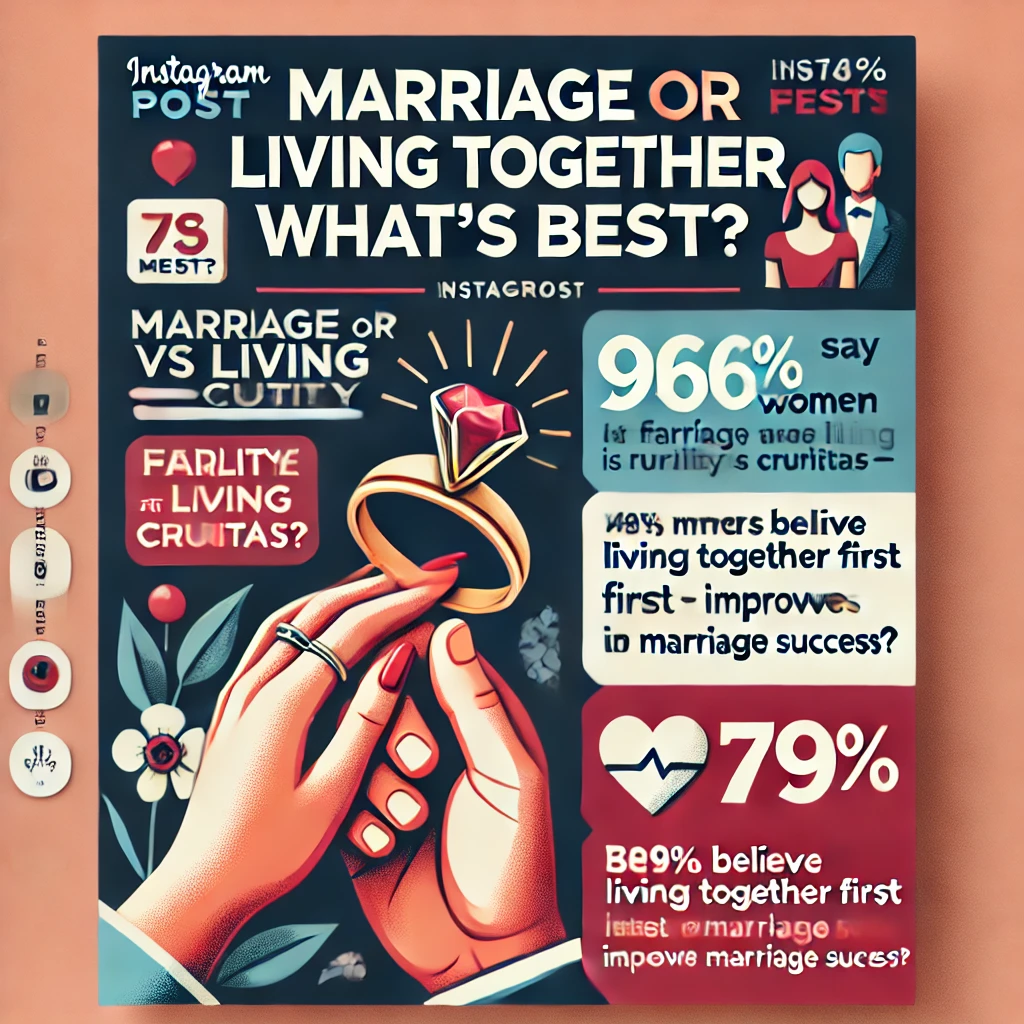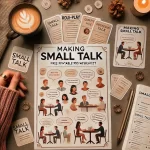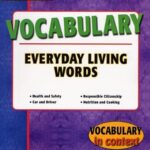Marriage or Living Together – What’s Best? A Language Advisor’s Perspective with free printable PDF
Marriage or Living Together

Marriage or Living Together
Objective:
When it comes to relationships, the debate between marriage and cohabitation has been ongoing for decades. But in today’s modern world, how do we navigate these concepts in the classroom? As a language advisor, I often find that discussing this topic not only helps students practice their English but also fosters lively debates and discussions that encourage fluency. Below, I’ll outline a classroom procedure you can use with a free PDF worksheet to get students talking about the pros and cons of both marriage and living together.
- Encourage fluency and lively debate in a classroom setting.
Materials:
- A free PDF worksheet based on the New Woman survey and cohabitation facts provided.
Procedure:
Warm-Up:
- Begin by asking your students a few questions to get them talking:
- How many of you are married?
- How many of you live with someone?
- How many of you are single?
- Next, introduce the topic by sharing results from the New Woman magazine survey, which explores modern perspectives on marriage and cohabitation. You can display the sheet with the survey results for students to discuss.
Survey Results to Discuss:
- 96% of women say fidelity is extremely important in a marriage.
- 96% believe they can stay faithful forever.
- 91% think that 29 is the perfect age to get married.
- 79% believe living together first ensures a lasting marriage.
- 56% feel married couples don’t put enough effort into their relationships.
- 15% believe they will marry more than once.
After the initial warm-up, ask students to respond to questions based on their own experiences or opinions.
For Married Students:
- Why did you choose to marry?
- Do you wish you had lived together before getting married?
- What do you think is the best thing about marriage?
For Students Living Together:
- Is this a temporary arrangement? Do you intend to marry?
- What are the advantages of living together rather than marrying?
- Is living together the same as being married?
For All Students:
- Do you agree with the statement “Marriage is only a piece of paper”?
Ready to Tie the Knot?
To spice up the discussion, share some insights into current trends and facts regarding marriage and cohabitation. This can help provide a broader perspective on how these two relationship types are evolving.
Marriage Facts (From the New Woman Survey):
- A majority of women still dream of marriage, though later in life than their mothers did.
- 96% of women place a high value on fidelity and staying faithful.
- 91% say 29 years old is the ideal age to get married.
- 79% believe living together first improves the odds of a successful marriage.
- However, 56% feel that married couples often neglect their relationships, and 15% think they’ll marry more than once.
Cohabitation Trends:
- In 1960, there were 90 married couples for every cohabiting couple. Today, that ratio is down to 6:1.
- Over 65% of single women in the U.S. now choose to live with their partners before marriage, a sharp increase from just 10% in the 1950s.
- In Sweden, nearly as many people cohabit as marry, showing a significant cultural shift.
Duration & Stability of Cohabitation:
- On average, cohabiting couples in the U.S. stay together for just 1.5 years before either breaking up or marrying.
- Over 60% of couples either separate or marry within two years.
- Cohabiting couples have a higher risk of divorce (35%-60% higher) compared to those who don’t live together before marriage.
Wrapping Up the Debate:
At the end of the activity, open the floor to a final discussion. Encourage your students to reflect on the information they’ve learned and how it applies to their own beliefs or cultures.
Consider the following:
- Is marriage still seen as the ultimate commitment, or is cohabitation becoming the new norm?
- What do cultural or generational differences reveal about attitudes toward commitment?
- What factors contribute to the choice between marriage and living together?
Conclusion: This activity not only gets your students thinking about relationships but also enhances their English language skills through conversation, critical thinking, and debate. By exploring real-world issues like marriage and cohabitation, we can help students build confidence and fluency while engaging in meaningful discussions.
For a free PDF worksheet and more ideas, feel free to get in touch or download the materials provided. It’s a great way to keep the conversation going beyond the classroom!
Ready to Get Started? Download the free PDF worksheet below and let your students dive into this important conversation. The debate on marriage versus cohabitation is not only informative but also a powerful tool for encouraging fluency in English.

📩 Want more free ESL lesson plans? Share this post with other teachers and let us know how it worked in your classroom!
💬 What other topics would you like lesson plans on? Drop your ideas in the comments!

DOWNLOAD THE PDF FOR FREE






